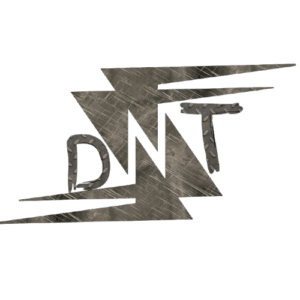Let’s cut the crap. You’re running a small or medium-sized business in India, and you’re fighting to get noticed. You see the big players rolling out fancy tech, and you’re wondering how you can compete without a bottomless budget. You’ve heard the buzz about Augmented Reality (AR), but it sounds expensive, complicated, and something for companies with sprawling tech departments. What if I told you that’s a lie? What if the most powerful lever you could pull to grow your business in 2025 is not only accessible but also surprisingly cheap? The truth is, the market for affordable AR tools India SMEs can use is exploding, and ignoring it is costing you sales every single day.
I’ve been there, advising countless founders – from a local clothing brand in Surat to a furniture maker in Jodhpur. Their biggest fear? Getting left behind. Their biggest roadblock? The perceived cost of innovation. So, I dug in. I’ve spent hundreds of hours testing platforms, speaking with developers, and seeing what works in practice for businesses like yours.
This isn’t another fluffy tech blog. This is your no-nonsense guide to the best, most affordable AR tools for Indian SMEs in 2025. We’ll break down exactly what you need, how to use it without writing a single line of code, and how to get real, measurable results – more sales, fewer returns, and customers who can’t stop talking about you. Let’s get to work.

Slash Your E-commerce Return Rates
Every online seller in India knows the pain of returns. A customer buys a dress, it doesn’t fit right. They buy a sofa, the colour clashes with their wall. These returns eat your profit margins alive. AR virtual try-on solutions attack this problem head-on. When a customer can see that exact handbag on their shoulder or that specific lamp on their bedside table, their purchase confidence skyrockets.
- The Stat: Shopify data shows that products with AR content have a 94% higher conversion rate than those without.
- The Impact: Companies using AR try-ons have seen returns drop by as much as 40%. For a small business, that’s pure profit back in your pocket.
Win the Local Retail War
Foot traffic is down. Competition from online giants is brutal. How does a local shop in Khan Market or a boutique on Commercial Street compete? By creating an experience that Amazon can’t replicate. Imagine a customer scanning a QR code on your product packaging and seeing a video of the artisan who made it. Or a child pointing a phone at a storybook and seeing the characters pop out in 3D. This “retail-tainment” turns a simple shopping trip into a memorable event. It creates buzz, drives foot traffic, and builds loyalty.
Train Your Team for a Fraction of the Cost
Got a team that needs training on new equipment or complex procedures? Forget flying in trainers or printing out thick, boring manuals. With AR, you can overlay digital instructions directly onto real-world machinery. A new mechanic can look at an engine through their phone and see arrows pointing to the exact part to fix, with step-by-step instructions floating next to it.
- The Result: Businesses have reported a 34% improvement in productivity and a massive reduction in errors when using AR for training and task guidance.
App-Based AR vs. WebAR: The Only Two Flavours You Need to Know
Before you pick a tool, you need to understand the battlefield. AR comes in two main forms. Choosing the right one is the most important decision you’ll make.
- App-Based AR: This requires the user to download a dedicated mobile application from the App Store or Google Play. Think of the IKEA Place app, where you need the app to place virtual furniture.
- Web-Based AR (WebAR): This works directly in a mobile web browser (like Chrome or Safari). No app download is needed. The user typically scans a QR code or clicks a link, and the AR experience opens instantly.
For 90% of Indian SMEs, the choice is obvious. Start with WebAR. The friction of downloading an app is a massive barrier for most customers. WebAR is instant, accessible, and much cheaper to develop and maintain.
Comparison: App-Based AR vs. WebAR
| Feature | App-Based AR | Web-Based AR (WebAR) |
|---|---|---|
| Accessibility | Low (Requires app download) | High (Works in browser via link/QR) |
| User Friction | High | Low |
| Development Cost | High (Often $10,000+) | Low to Medium (Starts free or <$50/month) |
| Performance | Can be higher & more complex | Good, but limited by browser capabilities |
| Discoverability | Poor (Needs App Store marketing) | Excellent (Shareable via links, social media) |
| Best For | Complex, long-term use cases (e.g., gaming, enterprise tools) | Marketing campaigns, e-commerce, virtual try-on, retail |
| The Winner for SMEs | Clear Winner |
The Ultimate Listicle: Top 7 Affordable AR Tools for India SMEs in 2025
Alright, let’s get to the good stuff. I’ve vetted these tools for their pricing, ease of use, and relevance to the Indian market. No fluff, just what works.
1. Vossle: The WebAR King for Indian Retail
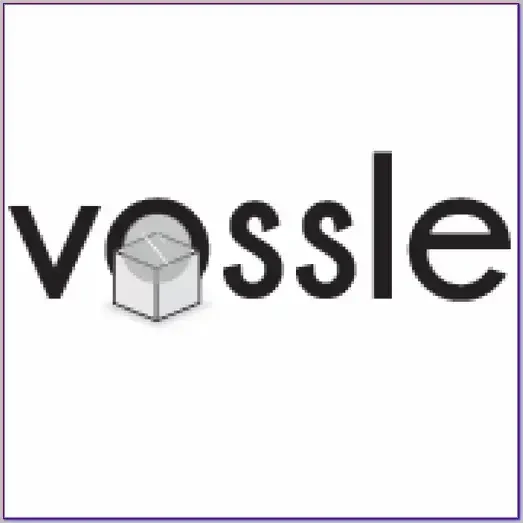
The Elevator Pitch: Vossle is an Indian-made, no-code WebAR platform that lets you create and launch AR experiences in minutes. It’s designed for businesses that want to achieve results quickly without hiring a developer. Think of it as the Canva for Augmented Reality.
Deep Dive into Features:
Vossle’s power is in its simplicity. You upload your 3D model (or choose from their library), drag and drop some interactive elements, and it generates a link and QR code. That’s it. It’s perfect for the Indian market, where QR code usage is second nature. You can create virtual try-ons for jewellery, watches, and glasses. You can make your product packaging interactive. You can even create immersive AR business cards. Because it’s a “no-app” solution, you can share your experience anywhere – on WhatsApp, in an email, or on a physical poster.
Real-World Indian SME Example:
Imagine Ramesh, who runs a furniture store in Pune. His website gets traffic, but cart abandonment is high because customers are unsure how a sofa will look in their home. Ramesh signs up for Vossle’s starter plan. He gets 3D models made for his top 5 best-selling sofas (costing him about $50 each from a freelancer). He uploads them to Vossle and creates an “AR View” for each product page. Now, a customer in Mumbai can tap a button, and the sofa instantly appears in their living room through their phone’s camera. They can walk around it, check the size, and see how it fits their decor. Ramesh’s sales for those 5 sofas jump by 40% in the first month, and returns drop to almost zero.
- Who is this PERFECT for? E-commerce brands, retail stores, restaurants, real estate agents, and anyone who sells a physical product.
- The Catch: While incredibly easy to use, the customisation options on lower-tier plans can be limited compared to a pro tool like 8th Wall.
- 3-Step Action Plan:
- Sign up for the free trial on their website.
- Use one of their stock 3D models to create a test experience in 5 minutes.
- Generate the QR code and test it on your own phone to see the magic.
- Pricing (as of July 2025): Offers a free tier for basic testing. Paid plans start from around $29/month.
- Website: vossle.com
2. 8th Wall: The Professional’s WebAR Platform
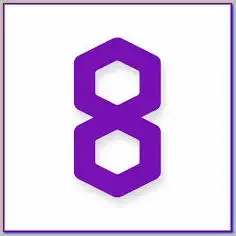
The Elevator Pitch: Now owned by Niantic (the creators of Pokémon GO), 8th Wall is the most powerful and feature-rich WebAR platform on the planet. If Vossle is Canva, 8th Wall is Adobe Photoshop. It gives you ultimate creative control, but comes with a steeper learning curve and a higher price tag.
Deep Dive into Features:
8th Wall’s “World Tracking” technology is best-in-class, meaning its AR experiences are incredibly stable and realistic. It offers features that simpler tools don’t, like Geospatial AR (tying AR content to real-world locations) and advanced image tracking. You can build complex, multi-scene experiences directly in their cloud-based editor. While it has no-code templates, its true power is unlocked with basic web development skills (HTML, JavaScript).
Real-World Indian SME Example:
Anjali is a marketing manager for a mid-sized tourism company in Goa. They want to create a unique heritage walk. Using 8th Wall’s Geospatial features, she works with a freelance developer to build a WebAR experience. Tourists scan a QR code at the start of the walk. As they approach key landmarks, their phone’s camera reveals historical photos overlaid on the buildings, 3D models of ancient artefacts, and video guides from a local historian. The experience goes viral on social media, leading to a 200% increase in bookings for their guided tours.
- Who is this PERFECT for? Marketing agencies, brands wanting highly custom campaigns, and businesses with access to a web developer.
- The Catch: The pricing is project-based and significantly more expensive. It’s overkill for simple product visualisation.
- 3-Step Action Plan:
- Explore their “Discovery Hub” to see hundreds of examples of what’s possible.
- Sign up for the free prototyping account to test the platform’s editor.
- If it feels right, plan a small, single-project campaign to test the ROI before committing long-term.
- Pricing (as of July 2025): Free for prototyping. Commercial plans start at $99/month for a basic license and go up to $700/project/month for branded campaigns.
- Website: 8thwall.com
3. Zakeke: The E-commerce Product Customiser
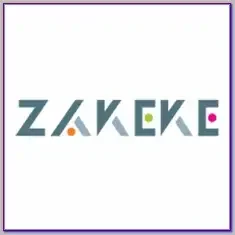
The Elevator Pitch: Zakeke is a plug-in for e-commerce platforms like Shopify and WooCommerce that adds AR and 3D product customisation to your online store. If you sell products that have multiple options (colours, materials, text engravings), this tool is a must-have.
Deep Dive into Features:
Zakeke’s magic lies in its seamless integration. Once installed, it lets your customers interact with your products in 3D right on the product page. They can change colours, add custom text, or upload their own logos. Then, with one tap, they can view that exact customised product in their own space using AR. This “see it before you buy it” capability is a conversion machine. It reduces uncertainty and makes the shopping experience fun and engaging.
Real-World Indian SME Example:
A small T-shirt printing business in Tiruppur integrates Zakeke into their Shopify store. Previously, they had a clunky design process involving back-and-forth emails. Now, customers can design their own T-shirts live on the site, adding text and graphics. Crucially, they can then use the AR feature to see how that T-shirt looks on themselves before buying. This simple addition increases their average order value by 20% (as people add more customisations) and slashes design approval time.
- Who is this PERFECT for? Any e-commerce business on Shopify, WooCommerce, BigCommerce, or Magento that sells customisable products.
- The Catch: It’s subscription-based, and the cost can add up if you have a large product catalogue. The AR feature is part of a larger product customisation suite.
- 3-Step Action Plan:
- Install their free trial app from the Shopify or WooCommerce app store.
- Configure your top-selling product with customisation options.
- Test the full 3D-to-AR workflow from a customer’s perspective.
- Pricing (as of July 2025): Plans start at $19.90/month.
- Website: zakeke.com
4. Adobe Aero: The Creative’s Free Playground
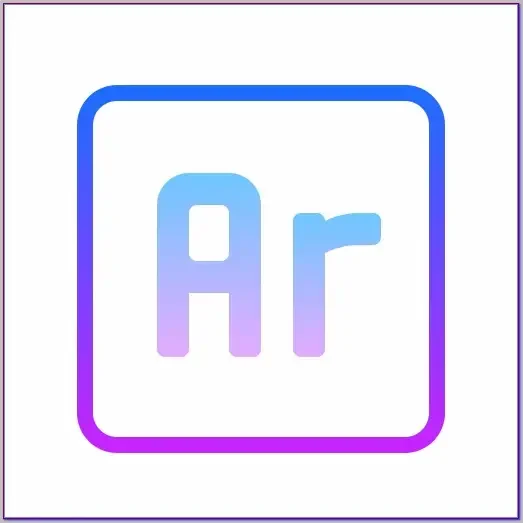
The Elevator Pitch: Adobe Aero is a free, incredibly user-friendly app from Adobe that lets you build and share immersive AR experiences with no code. If you or your team already use Adobe products like Photoshop or Illustrator, Aero is a no-brainer for getting started.
Deep Dive into Features:
Aero is designed for artists, designers, and marketers. You can import your existing 2D and 3D assets, add animations and triggers (e.g., “when a user taps the object, play a sound”), and place them in the real world. You can then share your creations via a link or QR code. It’s a fantastic tool for creating interactive marketing materials, educational content, or artistic installations.
Real-World Indian SME Example:
A children’s book author in Mumbai uses Aero to make her books interactive. She includes a QR code on each page. When a parent or child scans it, the characters from the book appear as animated 3D models on the page, telling parts of the story. She promotes this feature on social media, and her book sales triple.
- Who is this PERFECT for? Creatives, marketers, educators, and anyone who wants to experiment with AR storytelling without a budget.
- The Catch: It’s less focused on e-commerce transactions and more on brand experiences. It’s also mobile-app-based for creation, though viewing can be done via the web.
- 3-Step Action Plan:
- Download the free Adobe Aero app on your iOS or Android device.
- Import a free 3D model from Adobe Stock.
- Create a simple scene, add a “spin” animation, and share the link with a friend.
- Pricing (as of July 2025): Completely Free.
- Website: adobe.com/products/aero.html
5. Unity AR Foundation & Google ARCore: The Custom Build Route
The Elevator Pitch: This isn’t a single tool, but a powerful combination for creating completely custom, high-performance AR applications. Unity is a game engine, and AR Foundation is its framework for building AR apps that run on both iOS (using Apple’s ARKit) and Android (using Google’s ARCore). This is the path you take when off-the-shelf solutions aren’t enough.
Deep Dive into Features:
This route gives you limitless control. You can build anything from a complex multi-user AR game to a sophisticated enterprise application for industrial maintenance. Google’s ARCore, in particular, offers mind-blowing features for free, like its Geospatial API that can anchor AR content to over 87 countries with incredible precision. The trade-off? You absolutely need a developer. This isn’t a no-code solution.
- Who is this PERFECT for? Tech startups, businesses with unique AR requirements, and companies with the budget to hire a freelance Unity developer (which can be surprisingly affordable in India).
- The Catch: This is the most complex and time-consuming route. Development can take weeks or months.
- 3-Step Action Plan:
- Clearly define the custom AR feature you need that no other tool provides.
- Post a detailed project brief on platforms like Upwork or Freelancer to get quotes from Unity developers.
- Start with a small, well-defined Minimum Viable Product (MVP) to test your idea before investing in a full-featured app.
- Pricing (as of July 2025): Google ARCore is free. Unity has a free Personal Plan for businesses with under $200k in revenue. The main cost is developer fees.
6. Snapchat Lens Studio & TikTok Effect House: The Social Media Kings
The Elevator Pitch: With Meta’s Spark AR shutting down in early 2025, the new battleground for social AR is Snapchat and TikTok. Both platforms offer powerful, free desktop software that lets you create viral AR filters and effects for their massive user bases.
Deep Dive into Features:
These tools are all about creating fun, shareable experiences that ride on social media trends. They specialise in face tracking, virtual makeup, 2D/3D stickers, and simple AR games. Creating a branded filter that gets millions of views can be far more effective than a traditional ad campaign, and it costs you nothing but time.
- Who is this PERFECT for? B2C brands, restaurants, fashion and beauty companies, and anyone targeting a younger demographic (Gen Z and Millennials).
- The Catch: The experience is trapped within the social media app. You can’t embed it on your website.
- Pricing (as of July 2025): Both Lens Studio and Effect House are 100% Free.
- Websites: lens.snapchat.com and effecthouse.tiktok.com
7. TeamViewer Frontline: The Industrial & Service Powerhouse
The Elevator Pitch: This is a professional-grade AR platform for hands-on work. It allows you to guide field technicians or factory workers remotely using AR annotations. It’s about boosting efficiency, reducing errors, and improving safety.
Deep Dive into Features:
Imagine a technician in a remote location is struggling to fix a machine. An expert in your Mumbai office can see what the technician sees through their phone or smart glasses and draw AR instructions directly onto their view, highlighting buttons and guiding them through the repair step-by-step. It’s a game-changer for manufacturing, logistics, and field service companies.
- Who is this PERFECT for? Manufacturing SMEs, businesses with field service teams, and companies that need to conduct remote training and support.
- The Catch: It’s the most expensive tool on this list, priced per user, per month.
- Pricing (as of July 2025): Starts from around $49/user/month.
- Website: teamviewer.com/en/frontline/
The SME’s AR Playbook: Your 5-Step Implementation Guide
Knowing the tools is one thing; using them effectively is another. Here’s a simple playbook.
- Step 1: Start With a Goal, Not a Gimmick. Don’t do AR for the sake of it. Define a single, clear business problem you want to solve. Do you want to “reduce product returns by 20%” or “increase sales of our new product line”? Be specific.
- Step 2: Pick Your Weapon. Based on your goal and budget, choose the right tool from the list above. For most, starting with a WebAR platform like Vossle is the smartest move.
- Step 3: Solve the 3D Model Problem. This is often the biggest hurdle. You have options:
- Buy them: Marketplaces like Sketchfab or TurboSquid have thousands of models (starting from $10).
- Make them: Use a photogrammetry app like Polycam on a newer smartphone to scan your products and turn them into 3D models. It’s easier than you think.
- Hire someone: Find a 3D artist on Fiverr or Upwork. You can get a simple product model for as little as $30-$50.
- Step 4: Launch and SHOUT About It. Don’t just build the AR experience and hope people find it. Promote it everywhere. Put QR codes on your packaging, on tables in your cafe, in your email signature, and all over your social media.
- Step 5: Measure, Learn, Iterate. Use the analytics dashboards in these tools. See how many people are using your AR experience. See which products get the most engagement. Learn from the data and double down on what works.
Frequently Asked Questions (FAQs)
1. I have zero tech skills. Can I use these affordable AR tools?
Absolutely. Tools like Vossle and Adobe Aero are designed specifically for non-techies. They use simple drag-and-drop interfaces. If you can create a social media post, you can create a basic AR experience.
2. What’s the biggest mistake Indian SMEs make when starting with AR?
The biggest mistake is not having a clear goal and failing to promote the experience. They build a cool AR feature, hide it on their website, and then wonder why no one is using it. You have to guide your customers to it.
3. Realistically, how much should I budget for AR in my first year?
You can start for free using Adobe Aero or the free tiers of Vossle and 8th Wall. A realistic “all-in” budget for a small business to get started with a paid plan and some 3D models would be between $500 to $1,500 for the entire first year.
4. Will my customers’ phones even support AR?
Yes. Today, almost all modern Android and iOS smartphones support WebAR and app-based AR. Compatibility is no longer a major issue for reaching a broad Indian audience.
5. Is it better to use AR on my website or social media?
It depends on your goal. Use AR on your website (Zakeke, Vossle) to directly drive sales and conversions for specific products. Use AR on social media (Snapchat Lens Studio, TikTok Effect House) for brand awareness, viral marketing, and reaching a new audience. The best strategy often involves doing both.
The Final Word
The gap between you and the big brands is closing. Augmented Reality is no longer a futuristic dream; it’s a practical, powerful, and proven tool for growth. With the affordable AR tools India SMEs have at their fingertips in 2025, the only thing stopping you from transforming your customer experience is the decision to start. Stop waiting. Pick a tool, start small, and take action today.
Know More: For related content and deeper dives into digital strategy, check out Daytalk.in.

